-
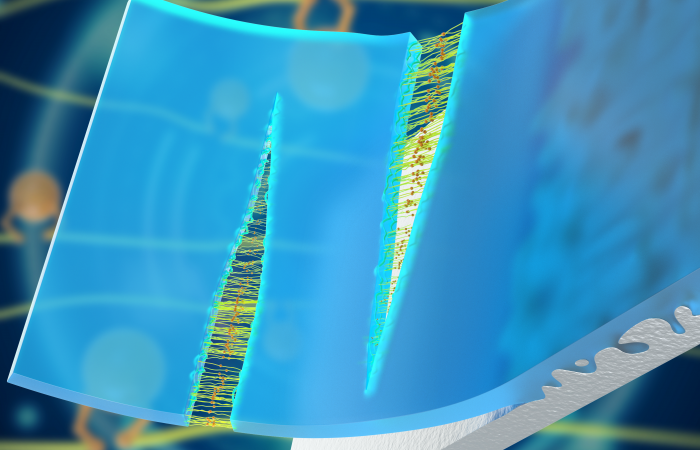
ORNL researchers produced self-healable and highly adhesive elastomers, proving they self-repair in ambient conditions and underwater. This project garnered a 2021 R&D 100 Award. Credit: ORNL, U.S. Dept. of Energy
-
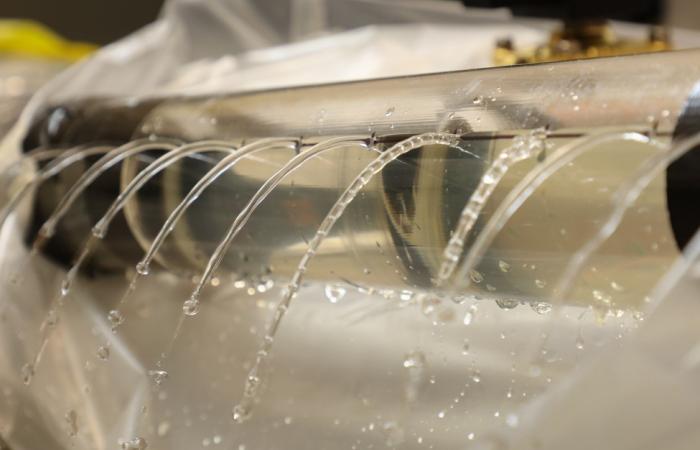
This 2021 R&D 100 Award winner, developed by ORNL, combines software and hardware technology to analyze existing city data and uses high-resolution modeling to identify optimal areas for precision deicing of roads. Credit: ORNL, U.S. Dept. of Energy
-
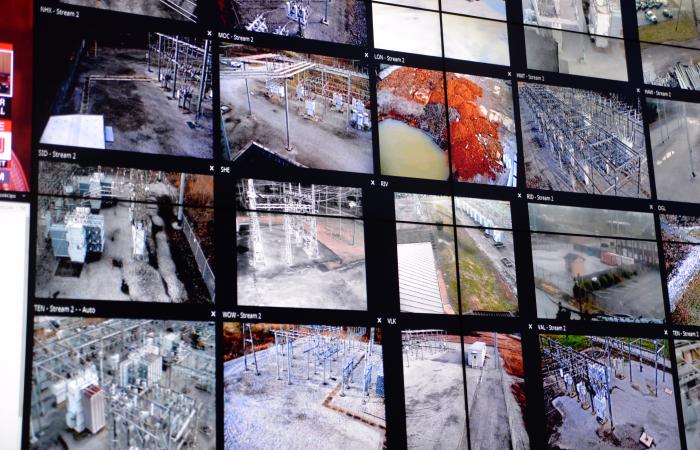
Scientists at ORNL co-developed a 2021 R&D 100 Award winning Quantum Ensured Defense method for protecting information, which promises to escape the ongoing attack-defend cycle of cybersecurity breeches. Credit: ORNL, U.S. Dept. of Energy
-
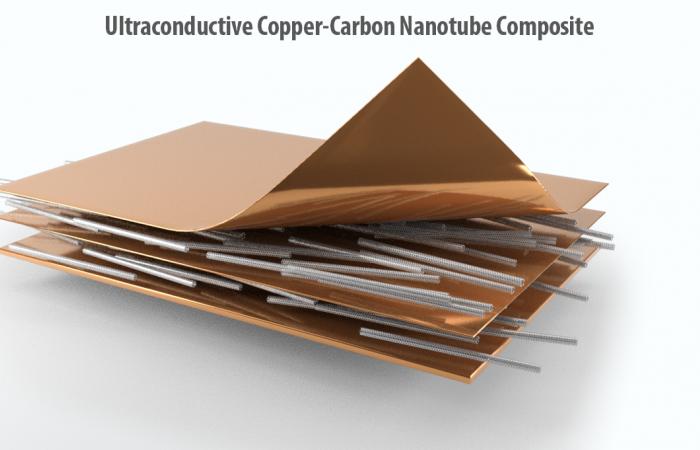
ORNL scientists used new techniques to create long lengths of a composite copper-carbon nanotube material with improved properties for use in electric vehicle traction motors -- a project that nabbed a 2021 R&D 100 Award. Credit: Andy Sproles/ORNL, U.S. Dept. of Energy
-
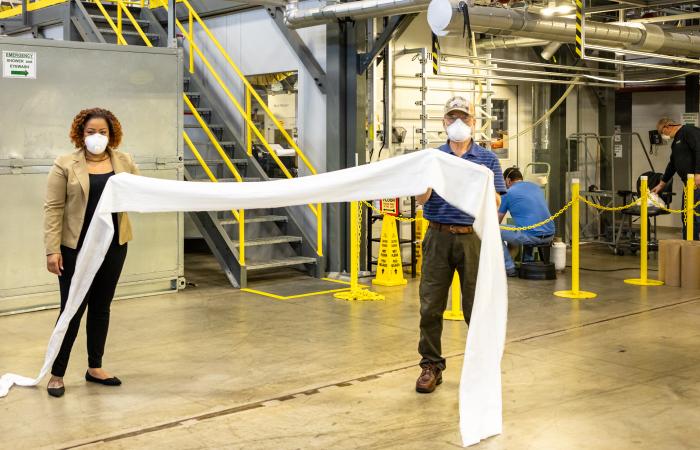
ORNL's Merlin Theodore and Peter Tsai, inventor of N95 filter media, hold a sample of scaled-up material produced at the lab's Carbon Fiber Technology Facility, a feat that received special recognition for COVID-19-related research during the 2021 R&D 100 Awards ceremony. Credit: Carlos Jones/ORNL, U.S. Dept. of Energy
-

ORNL researchers produced self-healable and highly adhesive elastomers, proving they self-repair in ambient conditions and underwater. This project garnered a 2021 R&D 100 Award. Credit: ORNL, U.S. Dept. of Energy
-

This 2021 R&D 100 Award winner, developed by ORNL, combines software and hardware technology to analyze existing city data and uses high-resolution modeling to identify optimal areas for precision deicing of roads. Credit: ORNL, U.S. Dept. of Energy
-

Scientists at ORNL co-developed a 2021 R&D 100 Award winning Quantum Ensured Defense method for protecting information, which promises to escape the ongoing attack-defend cycle of cybersecurity breeches. Credit: ORNL, U.S. Dept. of Energy
-

ORNL scientists used new techniques to create long lengths of a composite copper-carbon nanotube material with improved properties for use in electric vehicle traction motors -- a project that nabbed a 2021 R&D 100 Award. Credit: Andy Sproles/ORNL, U.S. Dept. of Energy
-

ORNL's Merlin Theodore and Peter Tsai, inventor of N95 filter media, hold a sample of scaled-up material produced at the lab's Carbon Fiber Technology Facility, a feat that received special recognition for COVID-19-related research during the 2021 R&D 100 Awards ceremony. Credit: Carlos Jones/ORNL, U.S. Dept. of Energy
Research teams from the Department of Energy's Oak Ridge National Laboratory and their technologies have received seven 2021 R&D 100 Awards, plus special recognition for a COVID-19-related project.
Winners from the organization's selection of finalists were announced at a virtual awards ceremony held Oct. 19-21, marking the conference's second year announcing recipients virtually.
Established in 1963, the R&D 100 Awards annually recognize 100 accomplishments in research leading to new commercial products, technologies and materials from around the world notable for their technological significance. This year's wins bring ORNL's total R&D 100 Awards to 232 since the award's inception.
"This recognition is a testament to our staff's commitment to developing truly innovative technologies," ORNL Director Thomas Zacharia said. "I am extremely proud of their creativity and dedication."
Among 11 finalists, ORNL researchers and technologies that have been named winners include:
Autonomous self-healing sealant, developed by ORNL.
A team of ORNL researchers have tackled the problem of brittle, leaky sealants by developing an adhesive material that self-heals autonomously. Sealants have widespread use in many fields such as construction and automotive, but they currently suffer from a propensity to crack and an inability to stick efficiently to dusty surfaces.
ORNL's team developed the self-healing sealant by integrating a self-healing polymer, poly(BCOE), with existing commercial sealants. The novel material can autonomously self-heal cracks that arise within days at room temperature. It also adheres better to dusty surfaces than current products, eliminating the need to clean an area or apply a primer to the substrate prior to using.
This discovery offers a simple solution that requires no external trigger to begin working. No other self-healing sealants are currently available on the market.
Funding for this project was provided by the DOE's Building Technologies Office.
ORNL's Diana Hun, Pengfei Cao and Tomonori Saito led the development team, with Zhen Zhang, Bingrui Li, Natasha Ghezawi and Zoriana Demchuk contributing.
Precision Deicer, developed by ORNL and Clinch River Computing LLC.
Researchers from ORNL developed a method to more precisely gauge the amount of deicing materials, such as salt or brine, needed to deice a particular road.
With limited resources, cities typically apply the same amount of deicing materials to every road and estimate the volume needed based on traffic conditions or road conditions, but rarely combine the two factors. Additionally, deicing based on traffic alone often results in overtreatment in areas exposed to intense sunlight and undertreatment in areas with extenuating factors other than traffic.
The precision deicer uses light-detection and ranging data to consider not only traffic, but also road conditions, slope and solar radiation to calculate a road vulnerability index indicating how much deicing material should be applied in a particular area. Unlike current methods, the deicer generates reports for specific areas rather than an entire city, ensuring that each area is given the correct treatment and minimizing unnecessary business closures.
Additionally, the precision deicer conserves state resources by ensuring that only necessary amounts of deicing materials are distributed and reduces runoff incurred from deicers.
The City of Knoxville has adopted a prototype of the product.
Funding for this project was provided by ORNL Seed Money - Intelligent Spatial Modeling Approach for Deicing Urban Roads.
ORNL's Olufemi Omitaomu led the development. ORNL's Budhendra Bhaduri, Dan Koch, Christi Johnson, Frederick Kyle Reed and Matthew Garrett contributed to the development, along with Clinch River Computing's Kevin Homan and the University of Tennessee's Ernest Cadotte.
QED: Quantum Ensured Defense of the Smart Electric Grid, developed by Los Alamos National Laboratory, ORNL and EPB.
Scientists at Los Alamos National Laboratory and ORNL have sought to escape the ongoing attack-defend cycle of cybersecurity breeches by developing a new method for protecting information called Quantum Ensured Defense, or QED.
Based on cutting-edge quantum science and network security, QED uses quantum communications in an effort to protect power grid control signals from third-party infiltration.
The technology harnesses single particles of light, or photons, to distribute cryptographic keys that can be used to lock control signals into secret codes. This novel method brings the security assurances of quantum communication systems to long-haul distances of electric grid systems.
The team has demonstrated the operational use of QED on commercial systems in Los Alamos, New Mexico, and Oak Ridge and Chattanooga in Tennessee.
Funding for this project was provided by DOE's Office of Cybersecurity, Energy Security and Emergency Response.
ORNL's Muneer Alshowkan, Philip Evans and Nicholas Peters partnered with LANL's Raymond Newell, Claira Safi and Justin Tripp and EBP's Steve Morrison and Scottie Summerlin to develop the technology.
UCC: Ultraconductive Copper-Carbon Nanotube Composite, developed by ORNL.
Copper is a key element in many electrical devices, but its resistance leads to power losses, meaning that new low-resistance conductors are needed in order to meet current clean energy goals.
ORNL researchers have developed an ultraconductive copper-carbon nanotube composite, or UCC, as an alternative that improves on the mechanical and electrical properties of pure copper. The product, made of carbon nanotubes integrated within a copper matrix, has high mechanical strength and excellent electrical properties.
The UCC composites have a number of applications in electric vehicles, power grids and data transfer systems for network server and aerospace purposes. They may also be used to reduce recharging times for electric vehicle batteries, or to build smaller, lighter motors with higher power output.
In addition to offering improved electrical and mechanical properties, the manufacturing process used to produce the UCC conductors is also easily scalable to industrial production.
Funding for this project was primarily provided by the DOE Vehicle Technologies Office and the ORNL Technology Innovation Program. A portion of the research was conducted at the Center for Nanophase Materials Sciences, which is a DOE Office of Science user facility.
ORNL's Tolga Aytug led the research, with help from Kai Li, Burak Ozpineci, Michael McGuire, Fred List, Soydan Ozcan, Lydia Skolrood (now a graduate student at North Carolina State University), Ilia Ivanov, Mina Yoon and Andrew Lupini.
GridDamper, developed by ORNL, the University of Tennessee, Knoxville, and the Electric Power Research Institute.
The increasing integration of renewable energy has created more severe, complex and frequent electrical oscillations in the grid. If not sufficiently controlled, they can lead to major blackout events that cost billions of dollars. Effective suppression of various oscillations is essential to maintain the secure and reliable operation of power grids.
GridDamper is a deployment-ready technology to allow more renewable electricity in power grids. The technology automatically updates its parameters, sensors and actuators to guarantee power grid stability and reliability when renewable energy and electricity demand fluctuate.
GridDamper is currently being deployed at the Terna National Control Center in Italy.
Funding for this project was provided by the DOE's Advanced Grid Modernization program, the Electric Power Research Institute and the National Science Foundation.
Principal investigators who developed the GridDamper technology include UT-ORNL Governor's Chair Yilu Liu, Lin Zhu of UT and Evangelos Farantatos of EPRI.
MSC MillMax, developed by ORNL, MSC Industrial Supply Co. and Manufacturing Laboratories.
A computerized numerical machine control system, MSC MillMax, uses measurements to eliminate wavy marks on metal that occurs in milling when a tool's spindle is not stiff enough.
Milling cuts metal by using a rotating tool with metalworkers typically manually adjusting the machinery in an unscientific process that can take hours. The new computerized system measures tool characteristics, the tool holder and the machine tool, then produces a report on ideal depth and spindle speed in 15 minutes.
With the machine doing the precision work, reductions in time, cost and scrap metal are achieved and metalworkers are able to increase productivity.
Funding for this project was provided by the DOE Laboratory Directed Research and Development, DOE Office of Science (CRADA), the Department of Defense, MSC Industrial Supply Co. and Manufacturing Laboratories Inc.
ORNL's Kevin Scott Smith, MSC Industrial Supply Co.'s Jamie Goettler and Manufacturing Laboratories' Dave Barton led the development. ORNL's Tony Schmitz and Andrew Honeycutt contributed to the development along with MSC Industrial Supply Co.'s Scott Stickney, Steve Baruch, Alan Yang and MSC's Metalworking Specialist Team and Manufacturing Laboratories' Tom Delio.
BIG-NET: Bis-iminoguanidine Negative Emission Technology, developed by ORNL, ReactWell and Holocene Climate Corporation.
Researchers from ORNL developed a method for separation of carbon dioxide from the air that has the potential to permanently remove billions of tons of the greenhouse gas out of the atmosphere. In the process, scientists use an aqueous solution containing ORNL-discovered receptors called Bis-iminoguanidine, or BIGs, to absorb carbon dioxide.
Upon absorption of carbon dioxide, BIGs turn into an insoluble crystalline salt, which can easily be removed from the liquid solution. The carbon dioxide from the salt can then be extracted under mild conditions and sent for deep underground storage, either in aquifers or former oil fields.
Additionally, industry partner ReactWell is developing a method to convert the extracted carbon dioxide into ethanol to be used in hand sanitizer and spirits.
Holocene Climate Corporation has also taken interest in the project and is working to scale up the technology and commercialize it with the ultimate goal of long-term storage of carbon dioxide for mitigating climate change.
Funding for this project was provided by the DOE Office of Science, DOE Office of Technology Transitions and Fossil Energy, and ReactWell LLC.
ORNL's Radu Custelcean, ReactWell's Brandon Iglesias and Holocene Climate Corporation's Anca Timofte are leading the development. ORNL's Charles Seipp, Neil Williams, Costas Tsouris and Kashif Nawaz have contributed to the development.
Domestic supply chain of filter media and face masks, a project led by ORNL, Techmer PM and DemeTECH, received the Silver Award in the Special Recognition: Battling COVID-19 category.
ORNL researchers adapted melt-blowing capabilities at DOE's Carbon Fiber Technology Facility to enable the production of filter material for N95 masks in the fight against COVID-19. The team used polypropylene supplemented with an additive from polymer material manufacturer Techmer PM. Peter Tsai, N95 mask material inventor, assisted ORNL in building a novel electrostatic charging device to charge the melt-blown material in production.
The resulting process had the capability to produce filter media for 9,000 masks per hour at greater than 95% filtration efficiency. DemeTECH, a medical supply company, also used ORNL's technology - co-developed with air, fuel and lube filtration product supplier Cummins - to manufacture filtration material and masks and expanded their Miami-based operations to include 15 production lines capable of yielding three million surgical masks and half a million N95 masks per day.
ORNL's COVID manufacturing efforts were conducted in coordination with the U.S. Department of Health and Human Services and funded in part by the DOE Office of Science through the National Virtual Biotechnology Laboratory, a consortium of DOE national laboratories focused on response to COVID-19, with funding provided by the Coronavirus CARES Act.
DOE's Carbon Fiber Technology Facility at ORNL is supported by the Office of Energy Efficiency and Renewable Energy's Advanced Manufacturing Office and the Vehicle Technologies Office.
Researchers on the project included ORNL's Lonnie Love, Craig Blue, Merlin Theodore, Greg Larsen and Parans Paranthanman; Peter Tsai, formerly of the University of Tennessee; Alan Franc of Techmer PM; Luis Arguello Jr. of DemeTECH; and Christopher Holm of Cummins.






